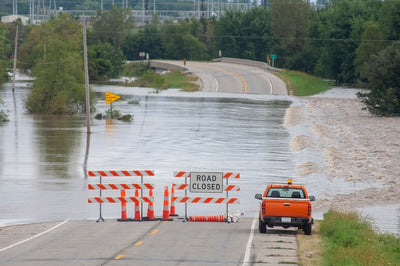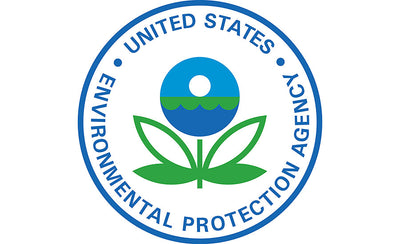Water Quality InformationWritten By Actual Experts
RSSWhat You Need To Know About PFAS Chemicals in Rainwater:

City Programs Invest in Green Solutions to Reduce Runoff

Military Bases Have High Concentrations of PFAS Chemicals

***Updated 8/29/18 to include video***
Analies Dyjak | Policy Nerd
Per and Polyfluoroalkyl Substances (PFAS) have been receiving a ton of media attention throughout this past year. PFAS are a category of toxic contaminants that have invaded public and private drinking water systems across the entire country. Military bases are extremely susceptible to this type of contamination because of necessary on-base activities. If you would like to learn more about what PFAS are, their health effects, and if they're regulated, please click here.
Why Do Military Bases Have High Concentrations of Per and Polyfluoroalkyl Substances (PFAS)?
Military bases have historically had issues with pollution, due to the nature of on-base activities. Municipal fire departments also travel to nearby military bases because they provide an open, secure area to train. So not only are military personnel being directly exposed to PFAS chemicals in water, but so are local fire departments. The Department of Defence isn’t necessarily to blame for the high rates of contamination of PFAS on military bases. The Manufacturers of PFAS-containing fire fighting foam who actively sell to the DOD are greatly at fault. Because there is no effective alternative on the market, the military has no choice but to continue purchasing and using these products. Unlike many other countries, the United States doesn’t use the precautionary principle in chemical manufacturing. This means that chemicals are introduced to the market before toxicological due diligence is completed. Most of the time it takes someone getting extremely sick for manufacturers to even begin to pay attention.
More often than not, military bases have their own underground private wells that provide drinking water to families living on base, rather than being apart of a public drinking water system. Fire fighting foam can either directly percolate into soil, or run off into surrounding surface water sources. Water from contaminated soil naturally recharges on-base drinking water wells, which families consume on a daily basis.
What Is The Department of Defense Doing About Per and Polyfluoroalkyl Substances (PFAS) on Military Bases?
The most recent data provided by the DOD stated that 99% people receiving non-DOD-treated water were served by systems with no violations, whereas only 89% of people receiving DOD-treated water were served by systems with no violations. It’s important to note that these data are from bases that voluntarily tested for PFAS chemicals in water, but they do however reiterate that military bases have higher concentrations of this contaminant than other areas in the country. In October of 2017, the US Government Accountability Office reported that the Department of Defense has taken action on PFAS. DOD has directly shut down wells or provided filtration to 11 military installations. This is definitely a step in the right direction, but there are over 400 military bases in the United States that are still contaminated. Approximately 3 million people in the US drink water provided by the DOD. Not only are active military personnel at risk, husbands, wives and children are being adversely impacted by PFAS chemicals in water. Again, manufacturers of these dangerous chemicals are mostly to blame for such high concentrations of PFAS contamination on military bases.
What Are Public Officials Doing About Per and Polyfluoroalkyl Substances (PFAS)?
EPA set a Lifetime Health Advisory Level of 70 parts per trillion for both PFOA and PFOS. The rule of thumb for PFAS is that the sum of the category of contaminants should be no higher than 70 parts per trillion. ATSDR believes this level should be reduced to 20 parts per trillion for drinking water. Again, Lifetime Health Advisory Levels and Minimum Risk Levels are non-enforceable limits that municipalities are not required to follow. DOD has not developed their own standard for PFAS in drinking water and therefore follow the non-enforceable national level of 70 parts per trillion. DOD is not at all incentivized to create a standard or even test for PFAS, because of the outrageous mitigation expenses.
Other Articles We Think You Might Enjoy:PFAS: What You Need To Know
Recap of EPA's 2018 PFAS National Leadership Summit
PFAS: Toxicological Profile
Problems We Found With Chattanooga's Drinking Water
Analies Dyjak | Policy Nerd
For Hydroviv’s assessment of Chattanooga, Tennessee’s drinking water quality, we collected water quality test data from the city’s Consumer Confidence Report and the U.S. Environmental Protection Agency. We cross referenced Chattanooga’s water quality data with toxicity studies in scientific and medical literature. The water filters that we sell at Hydroviv are optimized to filter out contaminants that are found in Chattanooga’s drinking water.
Where Does Chattanooga Source Its Drinking Water?
Chattanooga sources its drinking water primarily from the Tennessee River. Water is treated at the Tennessee American Water Citico Water Treatment Plant before being distributed to the 177,000 residents of Chattanooga.
Disinfection Byproducts In Chattanooga’s Drinking Water
In recent years, Chattanooga has had a major problem with disinfection byproducts or DBPs. DBPs form when the chlorine-based disinfectants that are routinely added the water supply, react with organic matter. DBPs are split into two categories; Haloacetic Acids-5 (HAA5) and Total Trihalomethanes (TTHMs). Concentrations of TTHMs averaged 70 parts per billion, but were detected as high as 89.1 parts per billion in Chattanooga water. HAA5 concentrations averaged 41.8 parts per billion and reached levels as high as 51.4 parts per billion. For a bit of perspective, the EPA set a Maximum Contaminant Level of 60 parts per billion for HAA5 and 80 parts per billion for TTHMs. While Chattanooga's water quality is technically still in compliance, these levels are definitely high. Disinfection Byproducts are a category of emerging contaminants which means they have been detected in drinking water but the risk to human health is unknown. Regulatory agencies have very little knowledge about the adverse health effects of DBPs, and their toxicity.
Lead In Chattanooga’s Drinking Water
Lead enters tap water through old lead service pipes and lead-containing plumbing. 10% of sites that were tested for lead had concentrations over 2 parts per billion. Environmental Protection Agency, Center for Disease Control, and American Academy of Pediatrics all recognize that there is no safe level of lead for children. However, this years lead levels in Chattanooga are relatively low compared to other major municipalities in the US.
It’s important to note that only a handful of contaminants are required to be included in annual Consumer Confidence Reports, and that there are hundreds of potentially harmful unregulated contaminants that aren’t accounted for. If you’re interested in learning more about water filters that have been optimized for Chattanooga’s tap water quality, feel free to visit www.hydroviv.com to talk to a Water Nerd on our live chat feature or send us an email at hello@hydroviv.com.
Other Articles We Think You Might Enjoy:Lead Contamination In Drinking Water
Disinfection Byproducts In Drinking Water: What You Need To Know
Why Does Washington, DC Water Taste Bad Right Now?
Analies Ross-Dyjak | Water Nerd
**Updated March 24, 2020 to include new chlorine switch dates
Our Water Nerds have received a ton of questions about a noticeable change in the taste and smell of Washington DC's tap water. While we've heard lots of interesting hypotheses, what's really happening is that the Washington Aqueduct (where DC Water purchases water from) has recently switched over its disinfectants from chloramine to chlorine, for an annual "spring cleaning" of the distribution lines. DC residents can expect funky-tasting water from March 23-May 4, 2020.
How Are Chloramine and Chlorine Different?
We answer this question in much more detail in a different post, but here's the skinny on chlorine in drinking water: Like a growing number of US cities, Washington, DC uses chloramine as the primary disinfectant for a couple of reasons:-
Chloramine persists longer in the distribution system, so it does a better job killing bacteria in areas of the water distribution system that are near the end of the pipes, or don't have as high of flow as other areas.
-
It forms fewer disinfection byproducts in the presence of organic matter.
-
Chloramine-treated water doesn't have as strong of a taste as chlorine-treated water.
While these are all great reasons to use chloramine, most cities that use chloramine undergo a more aggressive disinfection cycle for a few weeks each year (aka "Spring Cleaning").
What Are The Impacts of Switching to Chlorine?
People often find that the water tastes and smells like pool water during the disinfectant switch, in addition to your bathroom smelling like swimming pool's locker room after showering. If you want to fix this problem... you have a couple of options that don't involve bottled water (horrible for the environment and less regulated than tap water!).-
Get a water filter that's designed to handle it (and lead, chromium 6, VOCs...)!
-
If you let chlorinated tap water sit in a pitcher overnight, a good amount of the chlorine taste and smell will go away. However, many people find that the water tastes "stale" when this happens (from the less volatile disinfection byproducts).
When Will Washington, DC's Water Switch Back Over to Chloramine?
The "Spring Cleaning" period is scheduled to take place from March 23 until May 4, 2020. After May 4, the water utility provider will switch the disinfectant back over to chloramine. Until then... non-Hydroviv users will just have to hold their noses!
Other Great Articles We Think You'll Love:Tap Water Chlorination: The Good, The Bad, The Unknown
What Are Disinfection Byproducts and Why Should I Care?
Fluoride in Municipal Tap Water: What You Need To Know




